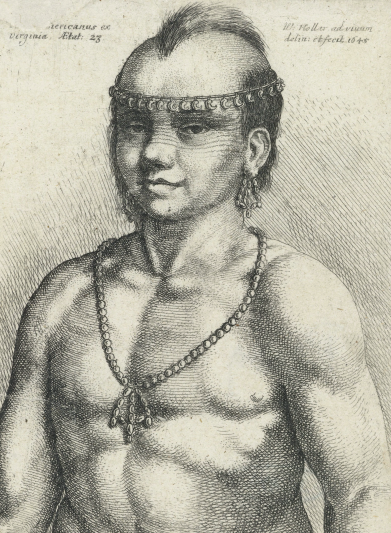
NY400 – The Native Americans and New Amsterdam
Learn about Oratam and the Council Chamber:
Learn about Skiwias and the Stadhuis:
Don’t want to watch the videos? Read the scripts here!
Video 1:
When the Europeans came to what would become New York, there were already many groups of Native Americans living in the area. The Hackensacks were one such group, part of the Munsee, who had occupied a large territory and were made up of three clans: Wolf, Turtle, and Turkey. The Hackensacks were a part of the Turtle Clan. Oratam, the Hackensack sachem during the early period of colonisation, played a prevalent role in the early relations between the Europeans and the Native Americans as occasions of dispute, treaty-making, and conflict arose.
Oratam is recorded as being an extremely peaceful man. However, during his time as sachem, some horrific acts of violence occurred which he would have to negotiate. Two of the most notable events was Kieft’s War in the 1640s, which began with a massacre allowed by Director Kieft of eighty Wecquaesgeek and Tappan people. The conflict would evolve into two years of fighting before peace was restored. In 1655, the so-called Peach War broke out, named after the murder of a Native woman killed for picking peaches in a Dutch colonist’s garden. Around fifty colonists were killed during this war and many more captives taken.
Oratam participated in the negotiations for both conflicts, helping to achieve peace between the Native Americans and the European colonists. Sara Kierstede, wife of the doctor Hans Kierstede, acted as an interpreter. Sara had mastered the Munsee language and was well trusted by Oratam. In fact, when the sachem was almost ninety years old, he gifted Sara approximately 2,120 acres to show her his gratitude. Without Oratam and Sara’s co-operation, many of the conflicts would have been much worse and peaceful outcomes much more difficult to attain.
Video 2:
Negotiations between the Dutch and the Native American sachems were important to maintain good relations and also allowed the colonists to expand beyond New Amsterdam. The Mahicans’ land spanned a section of the upper Hudson River, and they frequently engaged in treaty-making, land negotiations and conflict with the settlers of New Netherland. The Mahicans called the Hudson River Mahicannituck and referred to themselves as Muh-he-con-neok, which means the “People of the Waters That are Never Still.” Skiwias, a Mahican sachem, participated in multiple treaties with the Dutch on behalf of his people, yet the exact nature of his role is unclear. It has been suggested that he was acting as an entrepreneur, rather than sharing his payments fairly with the Mahican people.
Nevertheless, Skiwias’ role in negotiating with the Dutch was very beneficial for the fledgling colony, as he appeared to have maintained peaceful relations with them. He even signed the 1645 treaty which ended Kieft’s War, after two years of devastating warfare. He signed this document on the Wappingers’ behalf, an Eastern Algonquian Native American group who occupied the east bank of the Hudson River and were close allies to the Mahicans.
Skiwias became a very well-known figure among the Dutch, with records showing that he was regularly available to testify in court, participated in contract ceremonies, and was even treated by the local Dutch doctor. On July 9th, 1661, Skiwias signed over the land which is now the Town of Bethlehem, New York. In exchange, Jeremias van Rensselaer recorded that Skiwias and his wife were paid six pieces of cloth, 30 fathoms of wampum, four kettles, six hatchets, six chipaxes, six pairs of socks and 12 knives.


